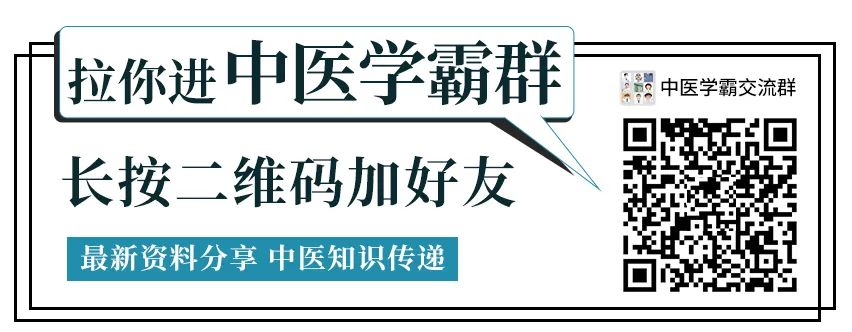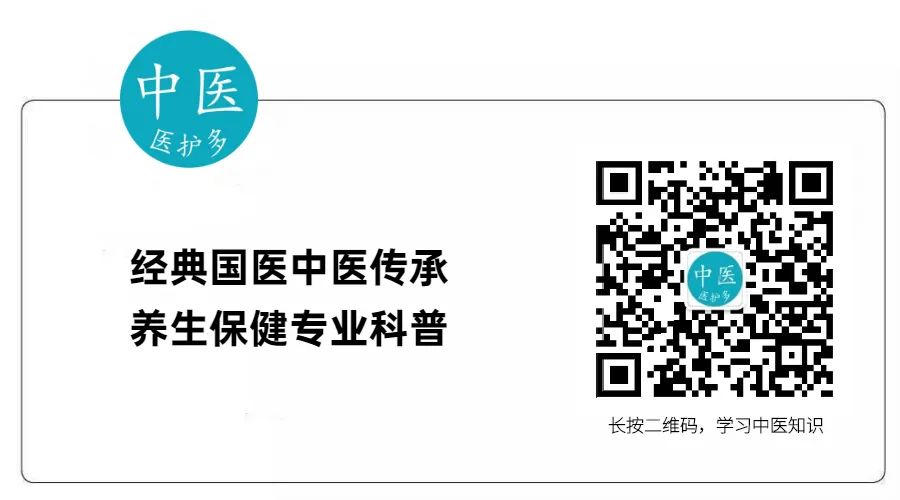

 Various Wonderful Uses of Fu Zi!Experiences from Renowned Experts in “Famous TCM Doctors on Formulas and Herbs”In clinical practice, Fu Zi (Aconiti Radix) is used in doses of 6~15g, commonly combined with the following:Combined with Tian Ma (Gastrodia Elata), Du Zhong (Eucommia Bark), Xu Duan (Dipsacus), Yi Yi Ren (Coix Seed), and Wei Ling Xian (Clematis), it treats low back and leg pain caused by lumbar spondylosis.Combined with Huang Qi (Astragalus), Sheng Ma (Cimicifuga), Ze Xie (Alisma), Fu Ling (Poria), Fang Feng (Saposhnikovia), Niu Xi (Achyranthes), and Bai Zhu (Atractylodes), it treats sciatica, especially in chronic cases with leg edema.Combined with Dang Shen (Codonopsis), Bai Zhu, Dang Gui (Angelica), and Xue Jie (Dragon’s Blood), it treats acute traumatic fractures with severe pain, thin and wiry pulse, cold hands and feet, and signs of qi deficiency.Jiao Zhonghua’s Experience in “Formulas and Herbs”In clinical practice, Fu Zi is used in doses of 10~120g, commonly combined with:Combined with Rou Gui (Cinnamon), it treats Yang deficiency type aplastic anemia.Jiao Zhonghua believes that for patients with aplastic anemia due to kidney Yang deficiency, starting with a small dose of Fu Zi and gradually increasing it yields excellent results.Wang Bishun’s Experience in “Formulas and Herbs”In clinical practice, Fu Zi is used in doses of 3~30g, commonly combined with:Combined with Dang Shen and Bai Zhu, it treats spleen and stomach Yang deficiency.Combined with Ji Xue Teng (Spatholobus), Xi Xin (Asarum), Qin Jiao (Gentiana), Wei Ling Xian, Wu Gong (Centipede), Chuan Xiong (Ligusticum), and Xian Ling Pi (Gynostemma), it treats wind-cold-damp bi syndrome.Combined with Qing Hao (Artemisia), Bie Jia (Tortoise Shell), Zhi Mu (Anemarrhena), Sheng Di Huang (Rehmannia), Dan Pi (Moutan), Sha Shen (Glehnia), and Rou Gui, it treats low fever.Wang Bishun believes that low body temperature (below 36°C) or low fever due to Yin deficiency (37~38°C) and Qi deficiency are indications for using Fu Zi.Zou Xuejia’s Experience in “Formulas and Herbs”In clinical practice, Fu Zi is used in doses of 30~50g, indicated for kidney Yang deficiency, including joint edema, mid-stage liver cirrhosis edema, sudden limb coldness during cancer chemotherapy, and generalized edema.Chen Chaozu’s Experience in “Formulas and Herbs”In clinical practice, Fu Zi is used in doses of 10~100g, commonly combined with:Combined with Ren Shen (Ginseng), it treats heart Qi deficiency.Combined with Bai Zhu, Fu Ling, and Sheng Jiang (Ginger), it treats Yang deficiency edema.Combined with Bai Zhu, Fu Ling, Bai Shao (White Peony), Sheng Jiang, Gui Zhi (Cinnamon Twig), it treats cold-damp bi pain.Combined with Bai Zhu, Fu Ling, Bai Shao, Sheng Jiang, Gua Lou (Trichosanthes), Xie Bai (Garlic Chives), Ban Xia (Pinellia), and Ge Gen (Kudzu), it treats Yang deficiency with damp stagnation in coronary heart disease.Combined with Bai Zhu, Sheng Jiang, Fu Ling, Bai Shao, Ren Shen, Dang Gui, and Huang Qi, it treats heart failure or spontaneous sweating due to Yang deficiency and weak Wei Qi.Combined with Bai Zhu, Fu Ling, Bai Shao, Sheng Jiang, Ma Huang (Ephedra), and Xi Xin, it treats chronic pharyngitis or hoarseness.Li Tiandao’s Experience in “Formulas and Herbs”In clinical practice, Fu Zi is used in doses of 9~30g, commonly combined with:Combined with Rou Gui, it warms and assists Yang, disperses cold, and alleviates pain.Combined with Gan Jiang (Dried Ginger), it warms the interior and dispels cold.Combined with Ren Shen and Bai Zhu, it warms and tonifies the spleen and kidney.Combined with Qiang Huo (Notopterygium), it alleviates bi pain and treats stubborn bi syndrome.Combined with Da Huang (Rhubarb), it warms Yang and purges turbidity, treating chronic renal failure and uremia.Li Tiandao believes that Fu Zi is essential for treating all cases of Yang deficiency, true cold-false heat syndrome, with a deep, slow, weak pulse, and for winter diseases treated in summer.Cui Gongrang’s Experience in “Formulas and Herbs”In clinical practice, Fu Zi is used in doses of 10~30g, commonly combined with:Combined with Si Jun Zi Tang (Four Gentlemen Decoction) or kidney-tonifying and spleen-strengthening herbs, it treats Yang deficiency type ischemic diseases of the limbs.Cui Gongrang believes that for patients with cold intolerance, numbness, and cold extremities, Fu Zi is essential.Chai Youhua’s Experience in “Formulas and Herbs”In clinical practice, Fu Zi is used in doses of 6~150g, commonly combined with:Combined with Gan Jiang, Fu Ling, Che Qian Zi (Plantago Seed), and Gao Liang Jiang (Alpinia), it treats cold stomach pain and diarrhea.Combined with Korean Red Ginseng, it treats various shock and collapse syndromes.Chai Youhua often starts with 20g and gradually increases to 150g; bi pain can be alleviated. Fu Zi should be boiled for 30 minutes before adding other herbs to avoid toxicity and side effects.Wang Shaohua’s Experience in “Formulas and Insights”In clinical practice, Fu Zi is used in doses of 6~15g, commonly combined with:Combined with Gui Zhi, Nan Sha Shen (South American Ginseng), Bei Sha Shen (North American Ginseng), Long Gu (Dragon Bone), Mu Li (Oyster Shell), and Ren Shen, it treats pulmonary heart disease and heart failure.Combined with Gan Jiang and Da Huang, it treats cold-damp intestinal obstruction.Combined with Gan Jiang, it treats enteritis of cold-damp type; for damp-heat type, it should be used with Huang Lian (Coptis).You Songxin’s Experience in “Formulas and Insights”In clinical practice, Fu Zi is used in doses of 1~30g, commonly combined with:Combined with Pao Jiang (Fried Ginger), Dang Shen, Bai Zhu, Zhi Gan Cao (Honey-fried Licorice), Mu Xiang (Aucklandia), Sha Ren (Amomum), and Xu Changqing (Herba Asari), it treats abdominal pain due to middle cold.You Songxin believes that patients with pale, swollen tongue and deep, thin pulse are indications for using Fu Zi.Yan Bing’s Experience in “Formulas and Insights”In clinical practice, Fu Zi is used in doses of 5~30~40g, commonly combined with:Combined with Gan Jiang, it treats stomach pain and palpitations.Combined with Ba Jitian (Morinda), it treats kidney Yang deficiency, palpitations, and edema.Combined with Shu Di Huang (Rehmannia), Ma Huang, and Yi Mu Cao (Leonurus), it treats Yin abscesses and cold entering the two Yin syndromes.Combined with Niu Xi, Dan Shen (Salvia), and Ze Xie, it lowers blood pressure.Combined with Ting Li Zi (Descurainia), it treats palpitations and wheezing, with good efficacy.Yan Bing believes that the minimum dose is 5g, and the maximum is 30~40g; it is essential for treating chronic cold diseases.Yan Ming’s Experience in “Formulas and Insights”In clinical practice, Fu Zi is used in doses of 3~80g, commonly combined with:Combined with Gan Jiang and Gan Cao (Licorice), it treats all types of Yang deficiency, especially for patients with low blood pressure, and can also alleviate the toxicity of Fu Zi, enhancing its efficacy.Combined with Long Gu and Mu Li, it treats Yang deficiency with sweating, palpitations, and anxiety.Combined with Bai Zhu and Gui Zhi, it treats cold-damp retention in the meridians and joint pain.Combined with Ma Huang, Xi Xin, and Wu Wei Zi (Schisandra), it treats elderly cough and wheezing with bradycardia.Combined with Long Dan Cao (Gentian), and Sheng Shi Jue Ming (Stone Grass), it treats active chronic hepatitis.Yan Ming believes that in clinical practice, using cooked Fu Zi in doses of 30~80g, for decades, no toxic side effects have been observed when boiled for over 2 hours. However, if not prepared according to this method, adverse reactions may occur; thus, when using large doses of Fu Zi, it is crucial to note “please strictly follow the doctor’s instructions for preparation” to avoid issues.Xu Wenhua’s Experience in “Formulas and Insights”In clinical practice, Fu Zi is used in doses of 5~15g, commonly combined with:Combined with Dang Shen and Bai Zhu, it treats middle-jiao cold-type ulcer disease.Combined with Da Huang, Pu Gong Ying (Dandelion), Jiang Can (Silkworm), and Lian Qiao (Forsythia), it treats acute tonsillitis.Combined with Da Qing Long Tang (Major Blue Dragon Decoction), Dang Shen, Mai Dong (Ophiopogon), and Wu Wei Zi, it treats chronic bronchitis in the elderly.Combined with Qu Mai (Dianthus) and Mu Tong (Akebia), it treats chronic urinary tract infections.Combined with Huang Qi, Fang Ji (Stephania), and Shi Hu (Dendrobium), it treats wind-heat.Combined with Huang Lian and Qing Hao, it treats summer heat in children.Xu Shoutian’s Experience in “Formulas and Insights”In clinical practice, Fu Zi is used in doses of 5~30g, commonly combined with:Combined with Gui Xin (Cinnamon Heart), Dang Gui, Yan Hu Suo (Corydalis), Ai Ye (Mugwort), and Xiang Fu (Cyperus), it treats abdominal pain during menstruation in young girls.Combined with Rou Dou Kou (Nutmeg) and Yi Yi Ren, it treats persistent diarrhea due to spleen deficiency and cold.Combined with Cang Zhu (Atractylodes), Dang Gui, Qiang Huo, Hong Hua (Carthamus), and Qin Jiao, it treats wind-cold-damp bi syndrome.
Various Wonderful Uses of Fu Zi!Experiences from Renowned Experts in “Famous TCM Doctors on Formulas and Herbs”In clinical practice, Fu Zi (Aconiti Radix) is used in doses of 6~15g, commonly combined with the following:Combined with Tian Ma (Gastrodia Elata), Du Zhong (Eucommia Bark), Xu Duan (Dipsacus), Yi Yi Ren (Coix Seed), and Wei Ling Xian (Clematis), it treats low back and leg pain caused by lumbar spondylosis.Combined with Huang Qi (Astragalus), Sheng Ma (Cimicifuga), Ze Xie (Alisma), Fu Ling (Poria), Fang Feng (Saposhnikovia), Niu Xi (Achyranthes), and Bai Zhu (Atractylodes), it treats sciatica, especially in chronic cases with leg edema.Combined with Dang Shen (Codonopsis), Bai Zhu, Dang Gui (Angelica), and Xue Jie (Dragon’s Blood), it treats acute traumatic fractures with severe pain, thin and wiry pulse, cold hands and feet, and signs of qi deficiency.Jiao Zhonghua’s Experience in “Formulas and Herbs”In clinical practice, Fu Zi is used in doses of 10~120g, commonly combined with:Combined with Rou Gui (Cinnamon), it treats Yang deficiency type aplastic anemia.Jiao Zhonghua believes that for patients with aplastic anemia due to kidney Yang deficiency, starting with a small dose of Fu Zi and gradually increasing it yields excellent results.Wang Bishun’s Experience in “Formulas and Herbs”In clinical practice, Fu Zi is used in doses of 3~30g, commonly combined with:Combined with Dang Shen and Bai Zhu, it treats spleen and stomach Yang deficiency.Combined with Ji Xue Teng (Spatholobus), Xi Xin (Asarum), Qin Jiao (Gentiana), Wei Ling Xian, Wu Gong (Centipede), Chuan Xiong (Ligusticum), and Xian Ling Pi (Gynostemma), it treats wind-cold-damp bi syndrome.Combined with Qing Hao (Artemisia), Bie Jia (Tortoise Shell), Zhi Mu (Anemarrhena), Sheng Di Huang (Rehmannia), Dan Pi (Moutan), Sha Shen (Glehnia), and Rou Gui, it treats low fever.Wang Bishun believes that low body temperature (below 36°C) or low fever due to Yin deficiency (37~38°C) and Qi deficiency are indications for using Fu Zi.Zou Xuejia’s Experience in “Formulas and Herbs”In clinical practice, Fu Zi is used in doses of 30~50g, indicated for kidney Yang deficiency, including joint edema, mid-stage liver cirrhosis edema, sudden limb coldness during cancer chemotherapy, and generalized edema.Chen Chaozu’s Experience in “Formulas and Herbs”In clinical practice, Fu Zi is used in doses of 10~100g, commonly combined with:Combined with Ren Shen (Ginseng), it treats heart Qi deficiency.Combined with Bai Zhu, Fu Ling, and Sheng Jiang (Ginger), it treats Yang deficiency edema.Combined with Bai Zhu, Fu Ling, Bai Shao (White Peony), Sheng Jiang, Gui Zhi (Cinnamon Twig), it treats cold-damp bi pain.Combined with Bai Zhu, Fu Ling, Bai Shao, Sheng Jiang, Gua Lou (Trichosanthes), Xie Bai (Garlic Chives), Ban Xia (Pinellia), and Ge Gen (Kudzu), it treats Yang deficiency with damp stagnation in coronary heart disease.Combined with Bai Zhu, Sheng Jiang, Fu Ling, Bai Shao, Ren Shen, Dang Gui, and Huang Qi, it treats heart failure or spontaneous sweating due to Yang deficiency and weak Wei Qi.Combined with Bai Zhu, Fu Ling, Bai Shao, Sheng Jiang, Ma Huang (Ephedra), and Xi Xin, it treats chronic pharyngitis or hoarseness.Li Tiandao’s Experience in “Formulas and Herbs”In clinical practice, Fu Zi is used in doses of 9~30g, commonly combined with:Combined with Rou Gui, it warms and assists Yang, disperses cold, and alleviates pain.Combined with Gan Jiang (Dried Ginger), it warms the interior and dispels cold.Combined with Ren Shen and Bai Zhu, it warms and tonifies the spleen and kidney.Combined with Qiang Huo (Notopterygium), it alleviates bi pain and treats stubborn bi syndrome.Combined with Da Huang (Rhubarb), it warms Yang and purges turbidity, treating chronic renal failure and uremia.Li Tiandao believes that Fu Zi is essential for treating all cases of Yang deficiency, true cold-false heat syndrome, with a deep, slow, weak pulse, and for winter diseases treated in summer.Cui Gongrang’s Experience in “Formulas and Herbs”In clinical practice, Fu Zi is used in doses of 10~30g, commonly combined with:Combined with Si Jun Zi Tang (Four Gentlemen Decoction) or kidney-tonifying and spleen-strengthening herbs, it treats Yang deficiency type ischemic diseases of the limbs.Cui Gongrang believes that for patients with cold intolerance, numbness, and cold extremities, Fu Zi is essential.Chai Youhua’s Experience in “Formulas and Herbs”In clinical practice, Fu Zi is used in doses of 6~150g, commonly combined with:Combined with Gan Jiang, Fu Ling, Che Qian Zi (Plantago Seed), and Gao Liang Jiang (Alpinia), it treats cold stomach pain and diarrhea.Combined with Korean Red Ginseng, it treats various shock and collapse syndromes.Chai Youhua often starts with 20g and gradually increases to 150g; bi pain can be alleviated. Fu Zi should be boiled for 30 minutes before adding other herbs to avoid toxicity and side effects.Wang Shaohua’s Experience in “Formulas and Insights”In clinical practice, Fu Zi is used in doses of 6~15g, commonly combined with:Combined with Gui Zhi, Nan Sha Shen (South American Ginseng), Bei Sha Shen (North American Ginseng), Long Gu (Dragon Bone), Mu Li (Oyster Shell), and Ren Shen, it treats pulmonary heart disease and heart failure.Combined with Gan Jiang and Da Huang, it treats cold-damp intestinal obstruction.Combined with Gan Jiang, it treats enteritis of cold-damp type; for damp-heat type, it should be used with Huang Lian (Coptis).You Songxin’s Experience in “Formulas and Insights”In clinical practice, Fu Zi is used in doses of 1~30g, commonly combined with:Combined with Pao Jiang (Fried Ginger), Dang Shen, Bai Zhu, Zhi Gan Cao (Honey-fried Licorice), Mu Xiang (Aucklandia), Sha Ren (Amomum), and Xu Changqing (Herba Asari), it treats abdominal pain due to middle cold.You Songxin believes that patients with pale, swollen tongue and deep, thin pulse are indications for using Fu Zi.Yan Bing’s Experience in “Formulas and Insights”In clinical practice, Fu Zi is used in doses of 5~30~40g, commonly combined with:Combined with Gan Jiang, it treats stomach pain and palpitations.Combined with Ba Jitian (Morinda), it treats kidney Yang deficiency, palpitations, and edema.Combined with Shu Di Huang (Rehmannia), Ma Huang, and Yi Mu Cao (Leonurus), it treats Yin abscesses and cold entering the two Yin syndromes.Combined with Niu Xi, Dan Shen (Salvia), and Ze Xie, it lowers blood pressure.Combined with Ting Li Zi (Descurainia), it treats palpitations and wheezing, with good efficacy.Yan Bing believes that the minimum dose is 5g, and the maximum is 30~40g; it is essential for treating chronic cold diseases.Yan Ming’s Experience in “Formulas and Insights”In clinical practice, Fu Zi is used in doses of 3~80g, commonly combined with:Combined with Gan Jiang and Gan Cao (Licorice), it treats all types of Yang deficiency, especially for patients with low blood pressure, and can also alleviate the toxicity of Fu Zi, enhancing its efficacy.Combined with Long Gu and Mu Li, it treats Yang deficiency with sweating, palpitations, and anxiety.Combined with Bai Zhu and Gui Zhi, it treats cold-damp retention in the meridians and joint pain.Combined with Ma Huang, Xi Xin, and Wu Wei Zi (Schisandra), it treats elderly cough and wheezing with bradycardia.Combined with Long Dan Cao (Gentian), and Sheng Shi Jue Ming (Stone Grass), it treats active chronic hepatitis.Yan Ming believes that in clinical practice, using cooked Fu Zi in doses of 30~80g, for decades, no toxic side effects have been observed when boiled for over 2 hours. However, if not prepared according to this method, adverse reactions may occur; thus, when using large doses of Fu Zi, it is crucial to note “please strictly follow the doctor’s instructions for preparation” to avoid issues.Xu Wenhua’s Experience in “Formulas and Insights”In clinical practice, Fu Zi is used in doses of 5~15g, commonly combined with:Combined with Dang Shen and Bai Zhu, it treats middle-jiao cold-type ulcer disease.Combined with Da Huang, Pu Gong Ying (Dandelion), Jiang Can (Silkworm), and Lian Qiao (Forsythia), it treats acute tonsillitis.Combined with Da Qing Long Tang (Major Blue Dragon Decoction), Dang Shen, Mai Dong (Ophiopogon), and Wu Wei Zi, it treats chronic bronchitis in the elderly.Combined with Qu Mai (Dianthus) and Mu Tong (Akebia), it treats chronic urinary tract infections.Combined with Huang Qi, Fang Ji (Stephania), and Shi Hu (Dendrobium), it treats wind-heat.Combined with Huang Lian and Qing Hao, it treats summer heat in children.Xu Shoutian’s Experience in “Formulas and Insights”In clinical practice, Fu Zi is used in doses of 5~30g, commonly combined with:Combined with Gui Xin (Cinnamon Heart), Dang Gui, Yan Hu Suo (Corydalis), Ai Ye (Mugwort), and Xiang Fu (Cyperus), it treats abdominal pain during menstruation in young girls.Combined with Rou Dou Kou (Nutmeg) and Yi Yi Ren, it treats persistent diarrhea due to spleen deficiency and cold.Combined with Cang Zhu (Atractylodes), Dang Gui, Qiang Huo, Hong Hua (Carthamus), and Qin Jiao, it treats wind-cold-damp bi syndrome.
Source | Organized by Mingyi Open Class from Classical Formula School
Author | Fu Wenlu
Copyright belongs to the original author. If there are any violations or infringements, please contact us.



 There is something important to tell youRecently, WeChat articles are no longer arranged in chronological orderThis may prevent you from seeing our articles in a timely mannerSo that we can meet every day at 07:00 in the futureI would like to invite youTo set the “Multinational Medical Experts” as a “Star Mark”Or frequently click “Looking” on the articlesSee you then!
There is something important to tell youRecently, WeChat articles are no longer arranged in chronological orderThis may prevent you from seeing our articles in a timely mannerSo that we can meet every day at 07:00 in the futureI would like to invite youTo set the “Multinational Medical Experts” as a “Star Mark”Or frequently click “Looking” on the articlesSee you then!

 Click 「Like」 + 「Looking」 To let more people see it
Click 「Like」 + 「Looking」 To let more people see it 

